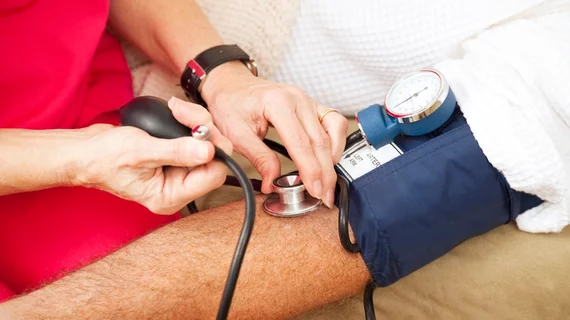A year after its launch, the American Heart Association and American Medical Association’s joint Target: BP Recognition Program, an effort to reduce the rate of uncontrolled hypertension in the U.S., has reached 802 members, the organizations announced this week.
According to the AHA and AMA, 42 percent of those physician practices and health systems earned “Gold” status in the program, meaning at least 70 percent of adults in their hypertensive patient population had controlled high blood pressure by the end of the year. On average, Gold members achieved 77 percent control of hypertension.
Data from this year’s stats were based around the previously accepted definition of hypertension, which defined uncontrolled high blood pressure as 140/90 mm Hg and up. Last year the AHA issued its first update to the guidelines in 14 years, lowering the national threshold for hypertension to 130/80 mm Hg or higher.
It’s estimated around 103 million people in the U.S. have high blood pressure, and last year the Target: BP Reduction Program represented 8.7 million of them.
“A driving force behind Target: BP’s goal of improving cardiovascular health is the physician and patient partnership,” AHA president Ivor Benjamin, MD, said in a release. “No single risk factor has more impact on the nation’s death rates from cardiovascular disease than high blood pressure.”
Benjamin said Target: BP aims to recognize healthcare practices for their commitment to prioritize blood pressure control in their communities. Institutions are incentivized with national recognition by the AHA and AMA, media tools and promotional items.
“We are pleased to see more and more practices prioritize blood pressure control and collaborate with their patients to achieve the program’s goal of reducing heart disease and strokes in their communities,” Benjamin said.

